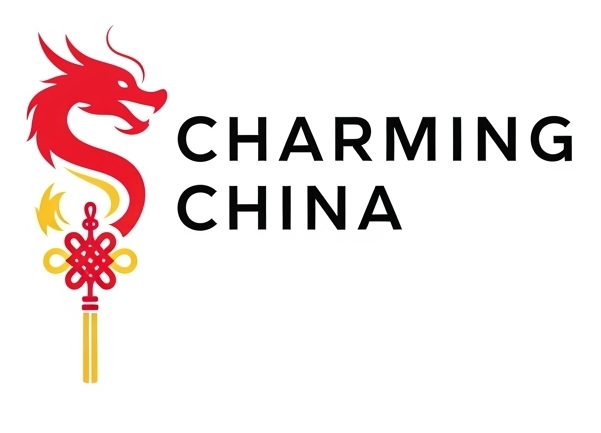How Chinese Weddings Differ from Western Ceremonies: A Cultural Comparison
Weddings are universal celebrations of love, but how they’re expressed differs dramatically around the world. In China, weddings are steeped in symbolism, family honor, and auspicious rituals, while Western ceremonies focus more on individual love stories and personal vows.
From the color red and lucky dates to the tea ceremony and banquet, every Chinese wedding element reflects a wish for happiness, harmony, and prosperity. Let’s explore the fascinating contrasts between Chinese and Western weddings — where ancient traditions meet modern romance.
1. Engagement and Betrothal: A Family Affair vs. A Romantic Proposal
In Western culture, engagement begins with a romantic proposal, often involving a diamond ring and a private moment between the couple.
In contrast, traditional Chinese engagements were a union between two families, not just two individuals. Historically, the groom’s family sent betrothal gifts (聘礼, pìnlǐ) — including tea, jewelry, or money — to the bride’s family to symbolize respect and commitment.
Even today, many Chinese families still observe simplified forms of this ritual, maintaining the importance of family blessings and harmony before marriage.
2. Wedding Colors: Red vs. White
Color plays one of the most striking roles in differentiating the two cultures.
| Element | Chinese Weddings | Western Weddings |
|---|---|---|
| Main Color | Red – symbolizes luck, joy, and prosperity | White – symbolizes purity and innocence |
| Bride’s Attire | Qipao or Cheongsam in red or gold embroidery | White wedding gown with veil |
| Decorations | Red banners, lanterns, and “Double Happiness (囍)” symbols | White flowers, lace, and pastel tones |
In China, red is the ultimate wedding color of fortune, believed to ward off evil spirits. In contrast, Western weddings favor white for new beginnings — a tradition popularized by Queen Victoria in the 19th century.
3. The Tea Ceremony vs. The Wedding Vows
The Chinese tea ceremony (敬茶) is the emotional heart of the wedding day.
The bride and groom serve tea to their parents and elders, expressing gratitude, respect, and unity between both families. In return, they receive blessings and red envelopes (红包) symbolizing good fortune.
Western weddings, on the other hand, center around the exchange of vows and rings, where couples promise lifelong commitment before family and friends — a deeply personal and romantic moment.
While one ceremony emphasizes filial piety, the other celebrates individual love and equality — both powerful in their own way.
4. Wedding Attire: Tradition Meets Modern Glamour
Chinese brides traditionally wear a red qipao (旗袍) or two-piece kua embroidered with phoenixes, dragons, and peonies — all symbols of auspicious blessings.
Many modern Chinese brides now combine both worlds:
Red for the tea ceremony and white for the reception or photos.
Western grooms typically wear tuxedos, while Chinese grooms often wear Tang suits or embroidered jackets to complement their brides’ attire.
5. The Banquet: Symbolic Feasting vs. Formal Dining
A Western wedding dinner may include a few courses, speeches, and dancing — often concluded with the cutting of the wedding cake.
A traditional Chinese wedding banquet (喜宴, xǐ yàn) can include 8 to 12 elaborate courses, each carrying symbolic meaning:
- Fish (鱼): Abundance and surplus every year.
- Noodles: Longevity.
- Lotus seeds: Fertility and many descendants.
- Sweet desserts: A sweet life together.
The celebration can last hours — full of laughter, toasts (“干杯!”), and joyful noise, symbolizing shared prosperity.
6. Gifts and Blessings: Red Envelopes vs. Wedding Registry
In Chinese weddings, guests traditionally bring red envelopes (红包) filled with money, representing blessings and prosperity. The amount is usually an even number — since even numbers symbolize good fortune and pairs.
In Western weddings, guests often give gifts from a registry, chosen to help the couple start their new home.
The idea centers more on practicality and personal preference rather than symbolic value.
7. Ceremony Length and Symbolism
Western weddings often include religious or civil ceremonies, lasting around 30–60 minutes, focusing on vows, rings, and official declarations.
Chinese weddings, however, can stretch across multiple events — from the engagement tea ceremony to wedding banquets and even post-wedding family visits.
Every step is tied to auspicious numbers, lucky dates, and rituals meant to ensure harmony and fortune in the couple’s life together.
8. Modern Fusion Weddings
Today, more couples are blending the best of both worlds — combining Western white dresses and ring exchanges with Chinese tea ceremonies and red décor.
This hybrid style honors tradition while celebrating modern love, appealing especially to Chinese diaspora couples or international marriages.
Whether it’s the red joy of a Chinese wedding or the white elegance of a Western ceremony, both share one common thread — the desire to celebrate love, unity, and a hopeful future. The beauty of these traditions lies not in their differences, but in their ability to bring families together and express what love truly means across cultures.
FAQ
Q1: Why do Chinese brides wear red instead of white?
Red symbolizes happiness, good luck, and prosperity — it’s believed to drive away bad spirits and ensure a joyful marriage.
Q2: What is the purpose of the Chinese tea ceremony?
It honors family elders, shows gratitude, and formally joins the two families — a vital symbol of respect and unity.
Q3: Do Chinese weddings have vows like Western ones?
Traditionally, no. The focus is on rituals and blessings rather than spoken promises, though modern couples often add personal vows.
Q4: How many days does a traditional Chinese wedding last?
Historically, celebrations could last several days, but today most modern Chinese weddings fit into one main day with pre-ceremonies.
Q5: Can couples mix Chinese and Western wedding traditions?
Absolutely! Many modern weddings now combine both — with red and white dresses, tea ceremonies, and exchange of rings.
